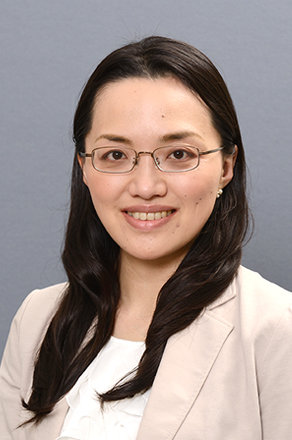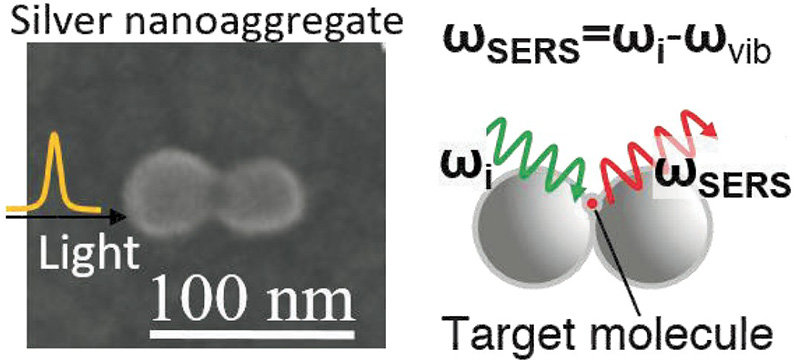
Spectroscopy – Light & Photons to Materials –
Physical Chemistry, Ultrasensitive Raman Spectroscopy Laboratory
Associate Professor:YAMAMOTO Yuko S.
E-mail:
[Research areas]
Frontiers in physical chemistry, surface-enhanced Raman spectroscopy (SERS), quantum optics
[Keywords]
Raman spectroscopy, surface-enhanced Raman scattering (SERS), nanomaterials
Skills and background we are looking for in prospective students
“Your will” is the most important “skill and background in prospective students” in our lab, e.g. “I would like to learn about light (photon)” “I would like to be an expert about light (photon)” “I would like to expertise about spectroscopy”. At least one of these should apply to you because such motivations are essential for starting research in our lab. I teach you how to learn the knowledge and the new techniques to make great achievements. Students with grand ambitions are particularly welcome.
What you can expect to learn in this laboratory
The ability to open new horizons through your own efforts. This skill is of use in many areas of our life, but there are few opportunities to learn it. I recommend you to have several skills in our lab: (1) sensitively perceive the present situation to forge your own path to new possibilities, (2) an appropriate awareness of the present issues and possess the solving skills of these issues, (3) a high level of linguistic ability, including presentation skills, communication skills, and written composition skills, (4) strong interpersonal skills to obtain funding and build consensus. I support you as you learn these through advancing your research. I also support you to be a professional researcher or starting a venture business during or after your time in our laboratory.
【Job category of graduates】
Chemistry manufacturers, start-ups, etc.
Research outline

Figure. Schematic of surface-enhanced Raman spectroscopy.
We are conducting cutting-edge research centered on light-matter interaction using spectroscopy e.g. Raman spectroscopy, surface-enhanced Raman spectroscopy (SERS) and UV-Vis absorption spectroscopy. Spectroscopy is one of the most fundamental and crucial techniques in materials research.
1. Strong Coupling in Hotspots: Nanometer-Scale Field for Discovering Novel Optical Phenomena
In the 1970s, a phenomenon called Surface-enhanced Raman scattering (SERS) was discovered. This is a phenomenon that Raman scattered light, which appears in very small amounts when the light is irradiated to substances, is dramatically enhanced. The SERS effect was initially discovered on silver nanostructure surfaces. Now, 50 years after its discovery, the mechanism behind why the Raman scattered light is dramatically enhanced has been largely understood.
In 2014, we discovered that a phenomenon called "strong coupling" occurs at "hot spots" where the Raman scattered light is dramatically enhanced, and that this "strong coupling" state also generates other new optical phenomena.
Hot spots are one of the unknown frontiers created by light in the nano-world. Since their discovery, we have continued to investigate the strong coupling at hot spots created by silver nanoparticles more deeply and in detail, discovering new phenomena.
2.Surface-Enhanced Raman Scattering (SERS)
As mentioned above, SERS was discovered in the 1970s and it has been 50 years since then. However, due to the lack of notable practical applications, SERS is called the "Sleeping Giant." Despite its dormant state, SERS continues to fascinate researchers, drawing a steady stream of new scientists who seek to awaken this sleeping giant.
In our research group, we study SERS using silver nanocolloidal particles. Silver nanocolloidal particles represent an extremely important experimental system that first achieved single-molecule SERS measurements in 1997.
Using these silver nanocolloidal particles, one of our research group members successfully opened a new research field called "SERS of rare earth elements" in 2024, which I will explain next.monitored by surface-enhanced Raman scattering with irradiation of visible light.
3.SERS for Rare-Earth Elements
Rare earth elements are heavy elements with atomic numbers 57 through 71. They earned their name due to their scarce occurrence on Earth. Because rare earth elements have similar outer shell electron configurations, traditional chemical methods have struggled to identify and distinguish between them.
In 2024, we successfully distinguished between the rare earth elements La (Lanthanum) and Gd (Gadolinium) by measuring SERS of chelate molecules containing these elements. This breakthrough represents a significant achievement in the field.
While the research is challenging, we welcome new researchers who are eager to join this innovative work.
Metals and Electrochemistry
Our laboratory has recently expanded into physical chemistry research, specifically focusing on the intersection of metallic materials science and electrochemistry. Although we cannot disclose specific details currently, we are conducting promising research that we believe will yield breakthrough results with global significance.
If you would like to check references or papers on our research results, please feel free to email to Yamamoto ( ) or visit Yamamotoʼs office (M4-40). I will give you copies of our papers.
) or visit Yamamotoʼs office (M4-40). I will give you copies of our papers.
Key publications
- Jin Hao, Tamitake Itoh and Yuko S. Yamamoto, “Classification of La3+ and Gd3+ rare earth ions using surface-enhanced Raman scat- tering”, Journal of Physical Chemistry C, 128, 5611 (2024)
- Tamitake Itoh and Yuko S. Yamamoto, “Basics and Frontiers of Electromagnetic Mechanism of SERS Hotspots”In Book: Procházka, M., Kneipp, J., Zhao, B., Ozaki, Y. (eds) “Surface- and Tip-Enhanced Raman Scattering Spectroscopy” Springer, Singapore (2024)
- Judith Langer, Yuko S. Yamamoto et al, “Present and Future of Surface Enhanced Raman Scattering”, ACS Nano, 14, 28 (2020)
Equipment
Surface-enhanced Raman microscope (homemade),
Raman microscope, UV-Vis absorption spectrometer,
Density functional theory (DFT) calculation system
Teaching policy
We foster a flexible and vibrant research environment dedicated to world-class basic science. Our laboratory operates without set core hours, allowing members to structure their research schedules independently. Team collaboration occurs through weekly general meetings and seminars, where members exchange information and share progress updates. This setup particularly suits students who excel at self-directed research.
We encourage researchers to present their work at academic conferences annually. Research themes blend advisor-suggested topics with students' individual interests and career goals. Our primary aim is to publish findings in international, English-language journals. This makes our lab an ideal environment for aspiring professional researchers.
I, as an academic advisor, am always available for one-on-one guidance. We encourage you to leverage my expertise and experience fully.